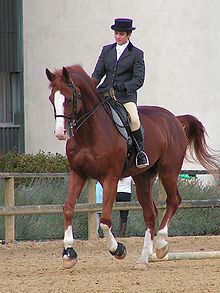Type the name of the breed you're looking for below
[wpdreams_ajaxsearchlite] Don't see the breed your're looking for? Click here and let us know!
Westphalian horse
| Country Of Origin | Germany |
| History and Background | Warendorf; The history of the Westphalian horse is linked with the State Stud of Warendorf, which was founded in 1826 to serve both the Prussian provinces of Westphalia and Rheinland. The stud was built under the Prussian Stud Administration, which was put together by King Frederick William I in 1713 to improve horse breeding efforts in the German-speaking region. Government-owned studs, identified as "State" or "Principal" studs depending on whether the facility keeps its own herd of mares, purchase stallions that fit the needs of the surrounding region. The stud fees of state-owned stallions are low, enabling local breeders to produce high-quality horses from heavy drafts to riding horses to ponies. The first stallions to stand at Warendorf were from East Prussia, and so were similar to Trakehners of the time. These horses were riding horses with Thoroughbred blood, suitable for the courtiers to ride and use in cavalry. As the human population between the Rhine and Weser rivers grew, the demand shifted to a medium-heavy all-purpose farm horse to cope with the increase in agriculture. The noble East Prussian stallions were replaced with heavy warmbloods from Oldenburg and East Frisia. The turn of the 20th century saw the heavy warmbloods outdone in the region by the more suitable Rhenish Cold Blood. These horses were better able to pull heavy plows and artillery, and so while they were principally bred around the Wickrath State Stud, warmblood sires at Warendorf were gradually replaced by cold bloods. The revolutions in automotive and agricultural technology that these heavy horses helped make possible made them obsolete in turn. In 1957 the Wickrath State Stud was dissolved as the heavy horses fell out of favour. The stock of warmblood horses was replenished with mares and stallions from nearby Hannover, on which the modern Westphalian is based. The Federal Riding School was incorporated to the state stud in 1968. It is the site of the training and examination of nationally licensed professional riders and instructors, and is also home to the German Equestrian Olympic Committee. Warendorf also hosts stallion performance tests annually. Westphalian studbook; The first studbook for horses in Westphalia was founded in 1888, and the following year the first evaluations of stallions and mares were carried out. These inspections became the defining characteristic of the Westphalian, as they had for other warmbloods. The breeders of the best fillies were awarded a prize or premium as an incentive to keep high-quality breeding stock in the region. Only the very best colts, the young male horses that most closely fit what the local breeders wanted in a horse, were allowed to become breeding stallions. The first performance tests were held in 1905. These performance tests meant that stallions had now to not only fit a conformational model to be used for breeding, but also had to prove their worth under saddle and in front of the plow. World War II destroyed all the old pedigree records that had been kept so carefully. The next mare evaluation wasn't held until 1946, when a new breeding aim was implemented - a riding horse. Within 30 years, this new aim was coming to fruition: the 100-day test was implemented in 1982, and a Westphalian, Ahlerich, took gold in dressage at the Los Angeles Olympics of 1984. While over the past decade, other registries have split their breeding stock into jumper-type and dressage-type, the Westphalian verband resists specialization. Instead, Westphalians are bred to be good movers with high rideability and jumping ability for a market of mostly amateurs who appreciate versatile, pleasant horses. |
| Use Today | Riding horse, Eventing horse, Show horse, Sport horse |
| Height | 15.2 and 17.2 hands (62 and 70 inches, 157 and 178 cm) |
| Colour | All colours |
| Characteristics | Westphalians are bred to the same standard as the other German warmbloods and in particular exchange a great deal of genetic material with the nearby Rhinelander and Hanoverian. The standard for all German riding horses calls for an appealing, long-lined, correct riding horse with bold, expansive, elastic gaits, suitable for all types of riding due to its temperament, character, and rideability. The Westphalian's type is less refined than that of a Thoroughbred, but less coarse than that of a "cold blood". The best way to identify a Westphalian is by the brand on the left hip: a crowned shield containing the letter "W" which Westphalians receive when they are awarded their papers at a foal show. |
| Personality and Temperament | Even-tempered and willing |



